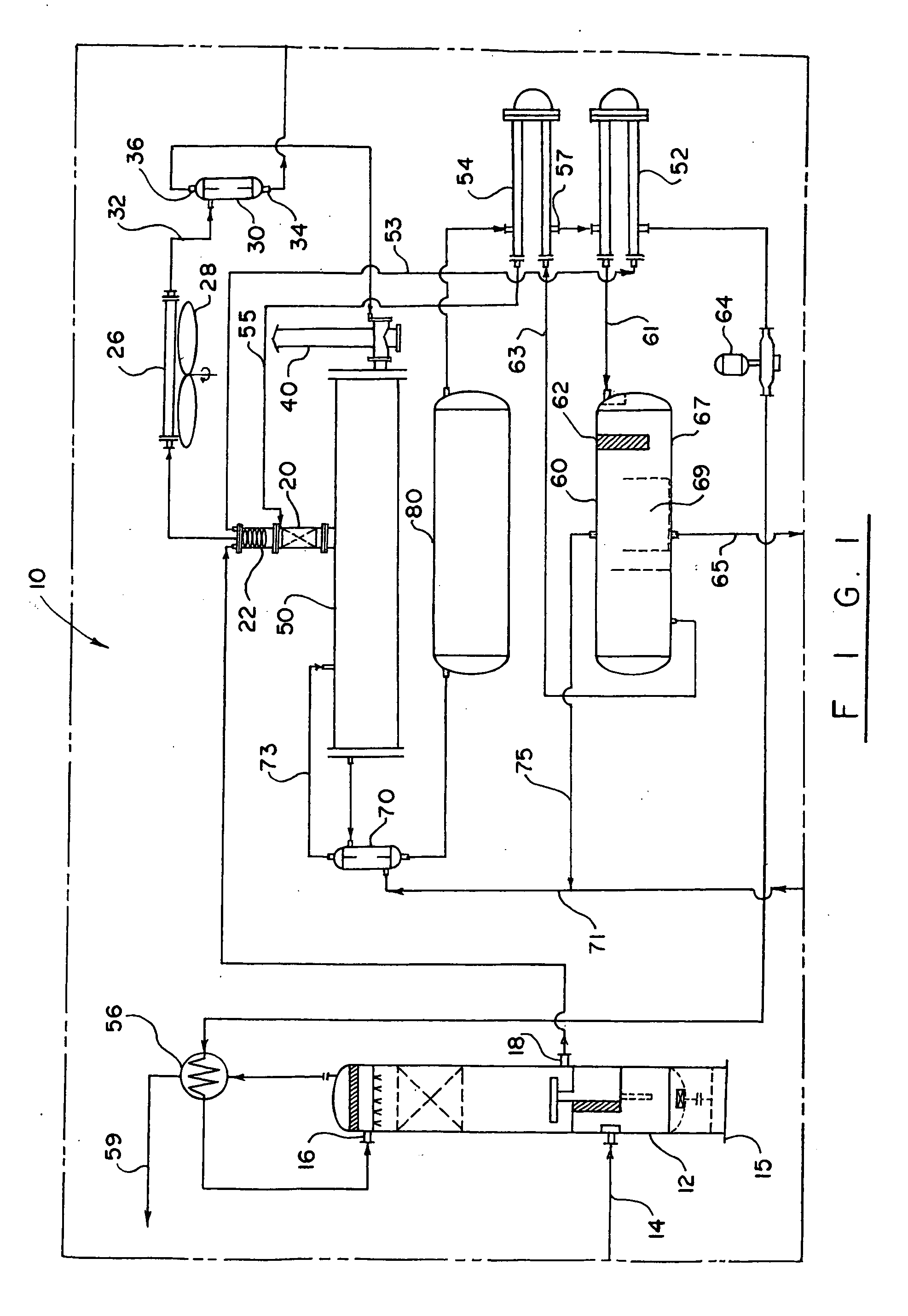System for dehydrating natural gas
a technology of natural gas and dehydration system, which is applied in the direction of gaseous fuels, separation processes, fuels, etc., can solve the problems of many problems in pipeline processing equipment, environmental problems, and natural gas found at the wellhead, and achieve the effect of reducing the amount of make-up fuel needed and reducing costs
- Summary
- Abstract
- Description
- Claims
- Application Information
AI Technical Summary
Benefits of technology
Problems solved by technology
Method used
Image
Examples
Embodiment Construction
[0021]Turning now to the drawing in more detail, numeral 10 designates the system of natural gas dehydration according to this invention. The system 10 comprises a contactor 12, which receives wet natural gas from a ground well (not shown) through a suitable conduit 14. The contactor 12 has a multistage-type design. If necessary, the contact tower 12 can be mounted on a skid 15 to facilitate transportation of the contact tower to an in-situ location.
[0022]In the illustrated embodiment, the wet natural gas is introduced into the contactor 12 at a lower location and flowed up through the contactor 12 against an oppositely traveling dehydrating agent, such as glycol, which has been introduced at an upper location of the contactor 12 through an inlet 16. At this stage, the wet natural gas is pressurized to the pressure of the ground well, arriving in the contactor 12, for the purpose of this description, at 900-1000 p.s.i and temperature of about 100° F. This invention works well with o...
PUM
| Property | Measurement | Unit |
|---|---|---|
| temperature | aaaaa | aaaaa |
| temperature | aaaaa | aaaaa |
| temperature | aaaaa | aaaaa |
Abstract
Description
Claims
Application Information
 Login to View More
Login to View More - R&D
- Intellectual Property
- Life Sciences
- Materials
- Tech Scout
- Unparalleled Data Quality
- Higher Quality Content
- 60% Fewer Hallucinations
Browse by: Latest US Patents, China's latest patents, Technical Efficacy Thesaurus, Application Domain, Technology Topic, Popular Technical Reports.
© 2025 PatSnap. All rights reserved.Legal|Privacy policy|Modern Slavery Act Transparency Statement|Sitemap|About US| Contact US: help@patsnap.com


